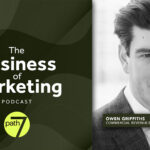By James Avery, Founder and CEO of Kevel
The digital advertising industry is worth more than $600 billion and cookies are responsible for being a large contributing factor. For years, third-party cookies have been used to track website visitors, improve user experiences, and collect data to help advertisers and brands funnel ads to the proper audience. However, as third-party cookies prolong the inevitable, industry conversations continue to suggest unknown ramifications will have a looming effect on the digital ecosystem.
As we look back to a 2022 State of Customer Engagement Report, 42% of brands predicted the death of third-party cookies would lower ROI on ad spend and result in a decreased ability to measure campaign efficiency. Moreover, 55% of brands said they weren’t fully prepared for cookieless marketing, as 81% are still reliant on third-party cookies.
Putting aside the data drops, I assure you a point is coming and it’s this. There is no greater urgency than now for advertisers and brands to understand the value of living in a third-party cookieless world. From soon-to-be privacy regulations to the rise of walled-gardens, the ground rules have been set. However, here lies a unique opportunity to target audiences and deliver outcomes in new and creative ways.
Let’s explore how the digital advertising industry can prepare for this ripple effect and seize the opportunity to reap outsized rewards.
Prioritize Test Marketing Channels that Deliver the Highest ROI
Understanding the performance of any and all marketing channels is critical to driving conversions, pipeline, growth, and customer engagement. Google possibly gave advertisers more time to respond to a future without third-party cookies, but it still demands a serious focus on re-evaluating personalization.
Prioritizing time-tested channels, like email marketing for example, often deliver a high ROI and it can prove to be an essential part of your marketing toolbox and omnichannel strategy.
Find Value in Strategic Partnering within a Cookieless World
With the demise of third-party cookies, the market value for first-party cookies is rising at a rapid pace and we’re seeing advertisers shift their focus from the potential data loss caused mainly by Intelligent Tracking Prevention (ITP) and other browser changes. Looking at the overall scope, it’s true advertisers run the risk of being impacted the most from losing third-party data they heavily relied on.
On the other hand, the cookieless era can create strategic partnerships where, for example, advertisers and publishers mutually thrive in a privacy-first world. Advertisers understand it’s in their best interest to align themselves with publishers. Contrarily, they must also see this partnership as a long-term solution to gain compelling user insights and build a direct relationship around first-party data.
This can be met with successful outcomes by exploring paid subscriptions and paywall models, where publishers can collect data and email addresses of registered users to monetize readership.
Rethink Ad Measurement Practices and Get Comfortable with Walled Gardens
When we look at cookie obsolescence, it’s clear to see that it will compound existing challenges of digital ad measurement. Ad measurement, as we know it, is on the verge of becoming irrelevant particularly as cookie data gaps continue to undermine attribution accuracy, optimization, incrementality testing and app-to-web tracking. To gear up for an era of advertising experimentation, advertisers must reset their measurement baselines, invest in market research and lock in key resources.
Moreover, get comfortable with “walled garden world” scenarios and prioritize investments in media, technology and data capabilities accordingly. There’s an expectation of increased allocations to Google, Facebook, and Amazon, so advertisers should anticipate to manage an increased number of direct media buys with platforms and publishers and a less cross-publisher programmatic display.






